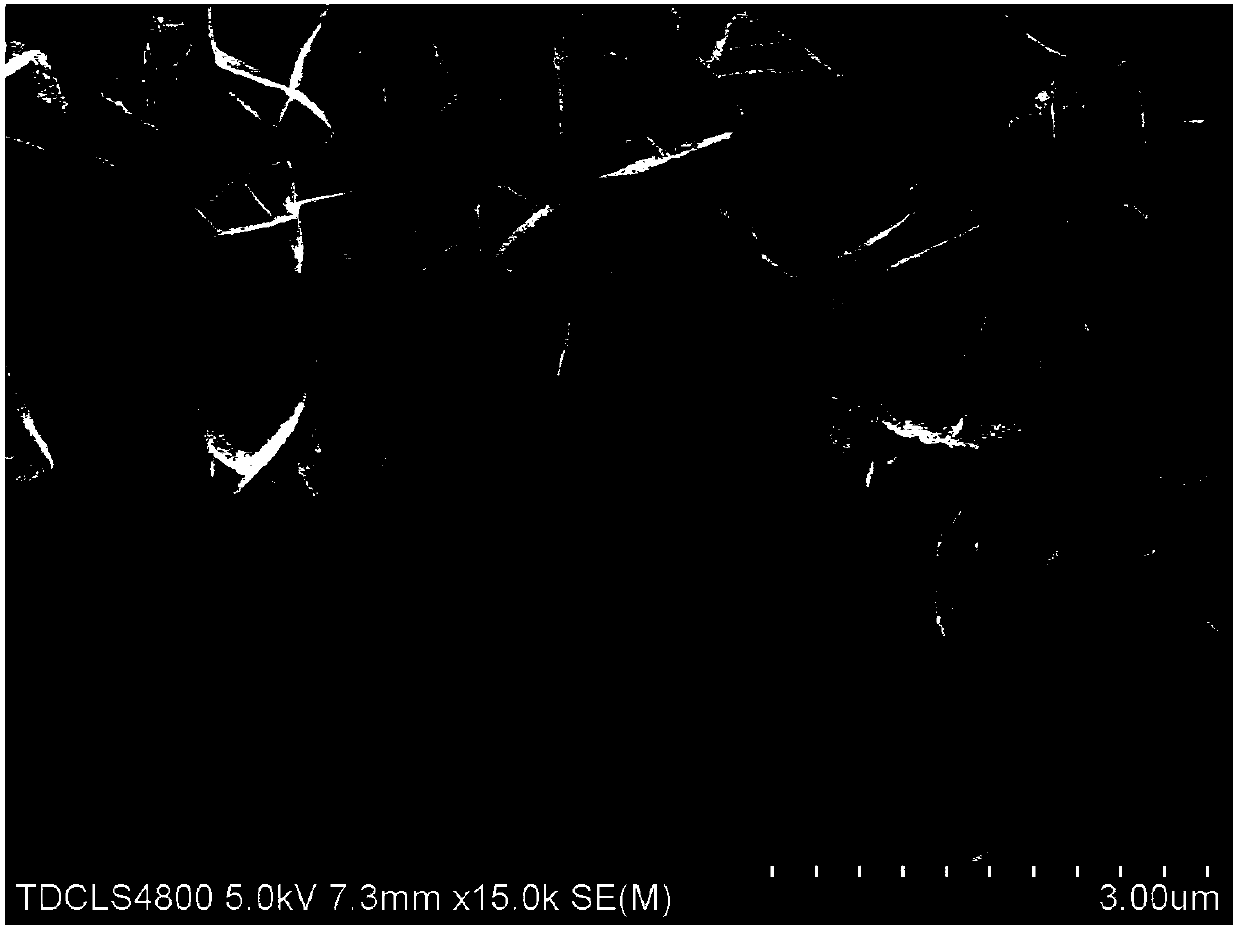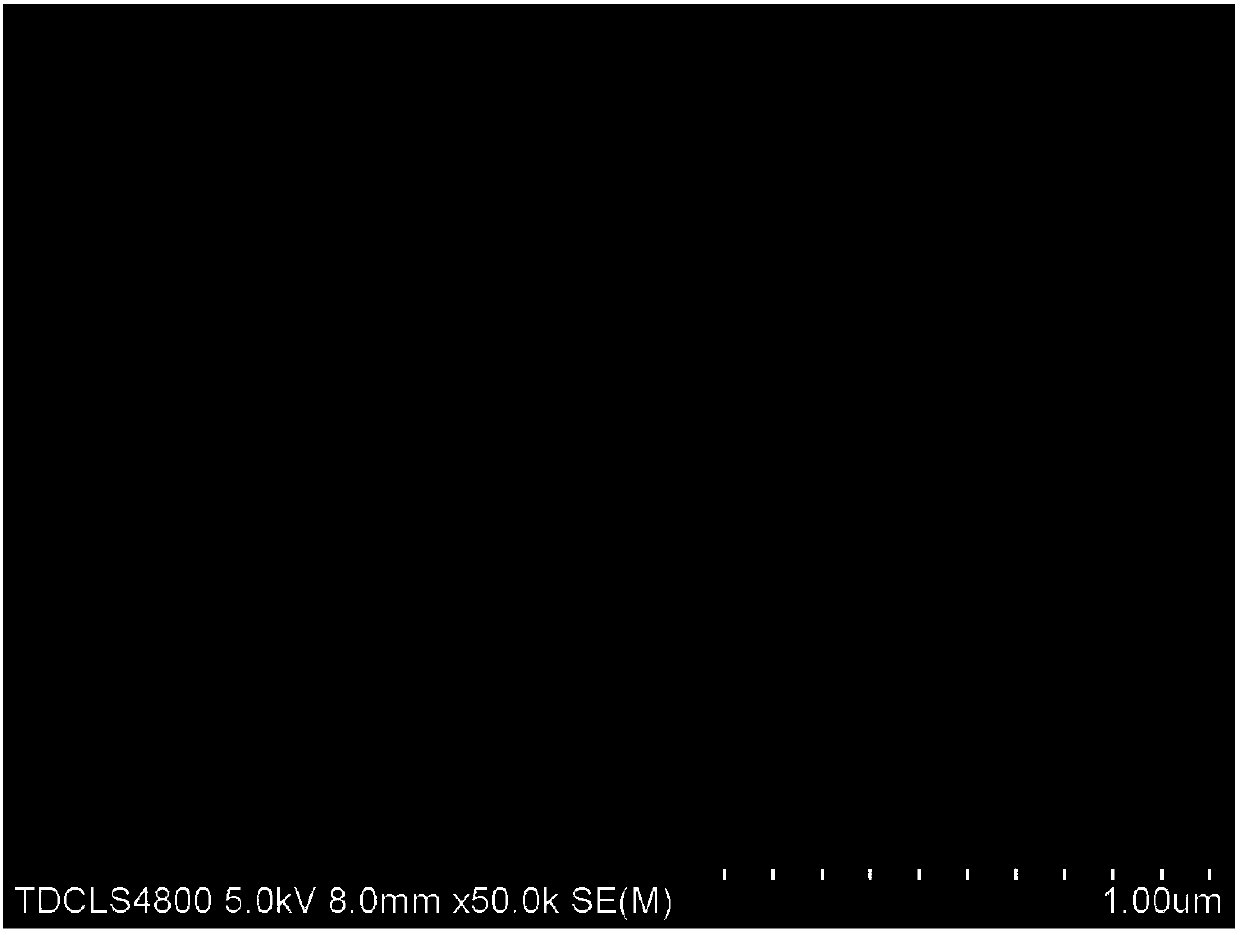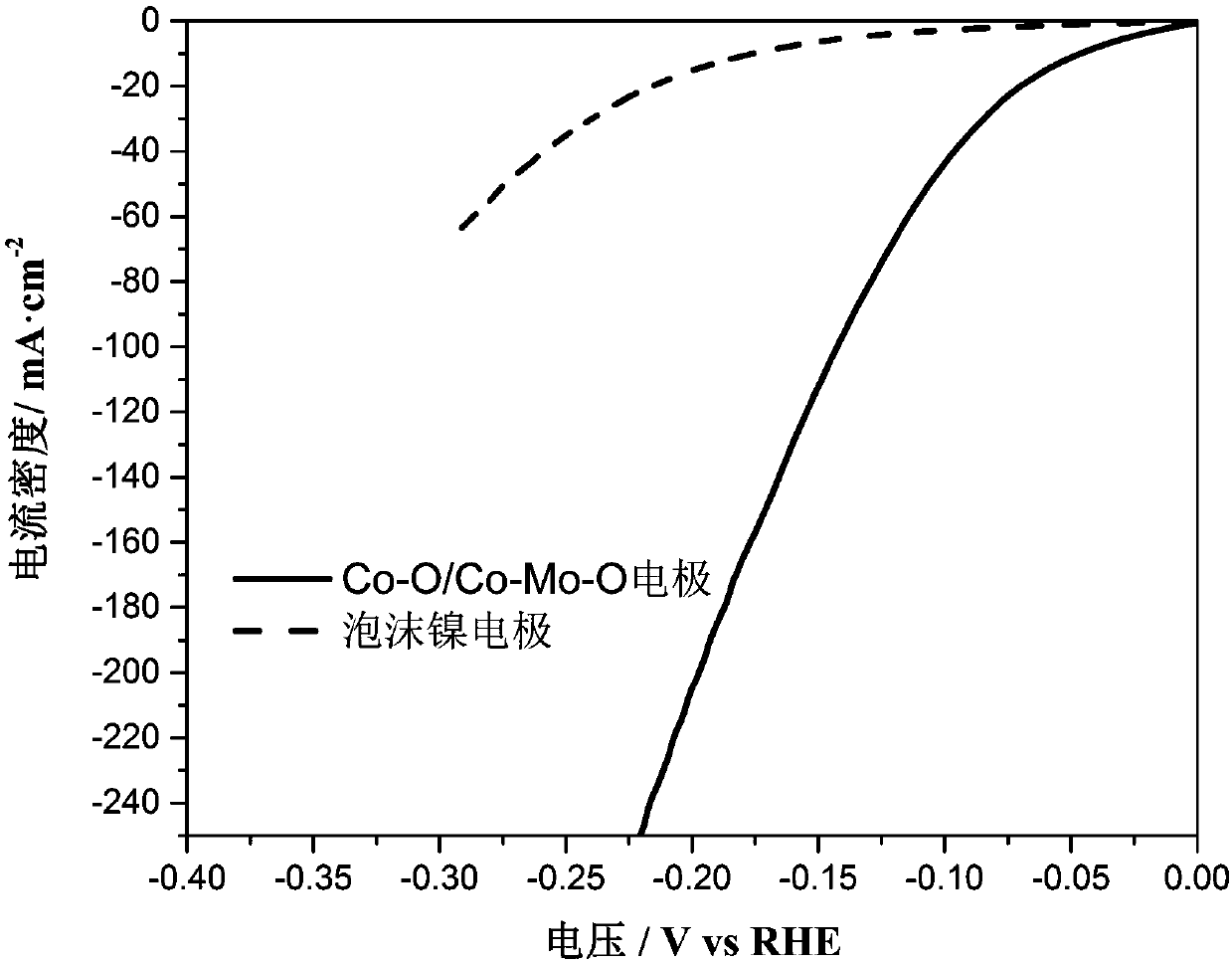Co-O efficient compound hydrogen evolution electrode covering Co-Mo-O and preparation method thereof
A hydrogen evolution electrode, co-mo-o technology, applied in the direction of electrodes, electrolysis process, electrolysis components, etc., can solve the problems of high energy consumption, difficult preparation of composite hydrogen evolution electrodes, poor stability, etc., to increase specific surface area and prevent shedding phenomenon , good stability
- Summary
- Abstract
- Description
- Claims
- Application Information
AI Technical Summary
Problems solved by technology
Method used
Image
Examples
Embodiment 1
[0039] (1) Pretreatment of conductive substrate
[0040] Choose a nickel foam that has been cut to a size of 2×4cm. Soak it completely with 100ml of acetone, and oscillate ultrasonically for 30 minutes to remove the residual engine oil during surface processing of nickel foam. The soaked nickel foam was rinsed repeatedly with deionized water, then placed in the prepared 150ml, 3mol / L HCl, and ultrasonically oscillated for 10min to remove the surface oxide layer of the foamed nickel. Finally, remove the nickel foam from the solution and wash it repeatedly with absolute ethanol and deionized water until PH = 7, and then place it in a vacuum drying oven for vacuum dry storage to prevent it from being secondary oxidized and keep it for subsequent use. use.
[0041] (2) One-time hydrothermal preparation of Co-Mo-O nanosheet interlayer
[0042] Using the hydrothermal method, use 0.001mol of ammonium molybdate tetrahydrate, 0.007mol of cobalt nitrate hexahydrate and 36ml of polyet...
Embodiment 2
[0056] (1) with step (1) in embodiment 1;
[0057] (2) Obtain the Co-Mo-O nanosheet intermediate layer by one hydrothermal treatment
[0058] First carry out the configuration of the precursor solution, select 0.002mol ammonium molybdate and 0.006mol cobalt nitrate hexahydrate and place them in 36ml polyethylene glycol solution for 45 minutes of ultrasonic vibration, and fully stir evenly, and the foamed nickel substrate treated in step (1) Put them together in a 50ml polytetrafluorohydrothermal reaction kettle for hydrothermal reaction. The temperature of the hydrothermal reaction was set at 180°C, and the time was 20 hours. After the hydrothermal reaction was completed, after the reaction kettle was naturally cooled to room temperature, the electrodes were taken out and rinsed with deionized water to remove surface residues, and placed in a vacuum desiccator for natural After air-drying, the Co-Mo-O nanosheet interlayer was obtained.
[0059] (3) Co-O nanowire catalytic la...
PUM
 Login to View More
Login to View More Abstract
Description
Claims
Application Information
 Login to View More
Login to View More - R&D
- Intellectual Property
- Life Sciences
- Materials
- Tech Scout
- Unparalleled Data Quality
- Higher Quality Content
- 60% Fewer Hallucinations
Browse by: Latest US Patents, China's latest patents, Technical Efficacy Thesaurus, Application Domain, Technology Topic, Popular Technical Reports.
© 2025 PatSnap. All rights reserved.Legal|Privacy policy|Modern Slavery Act Transparency Statement|Sitemap|About US| Contact US: help@patsnap.com



